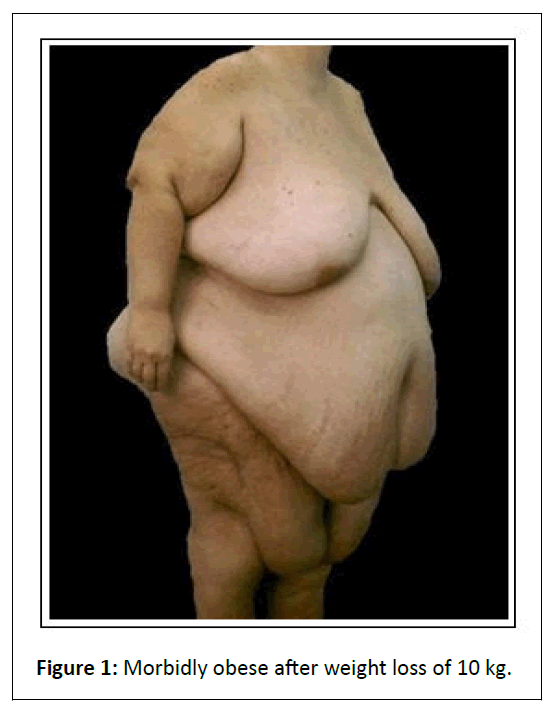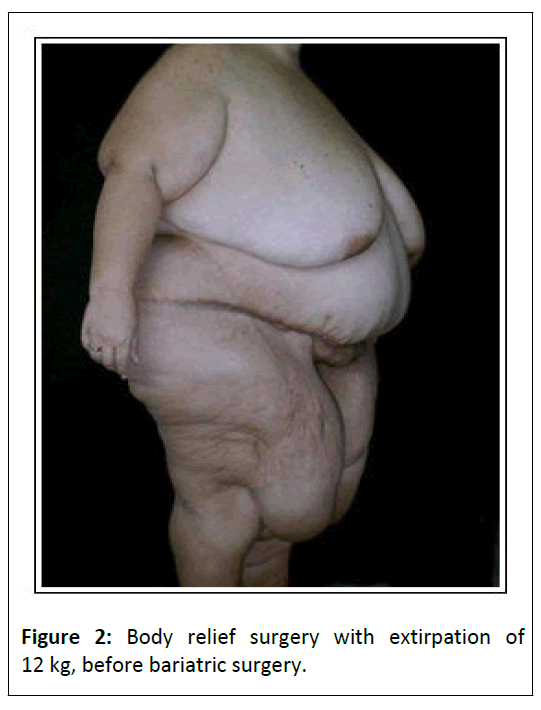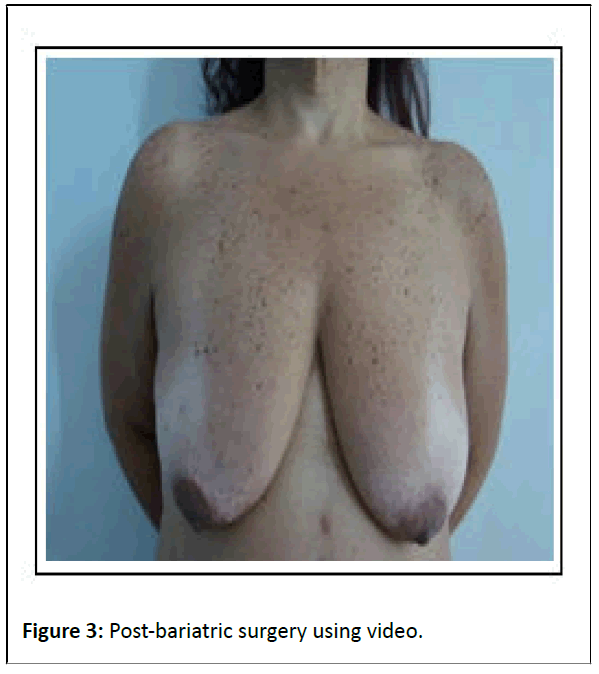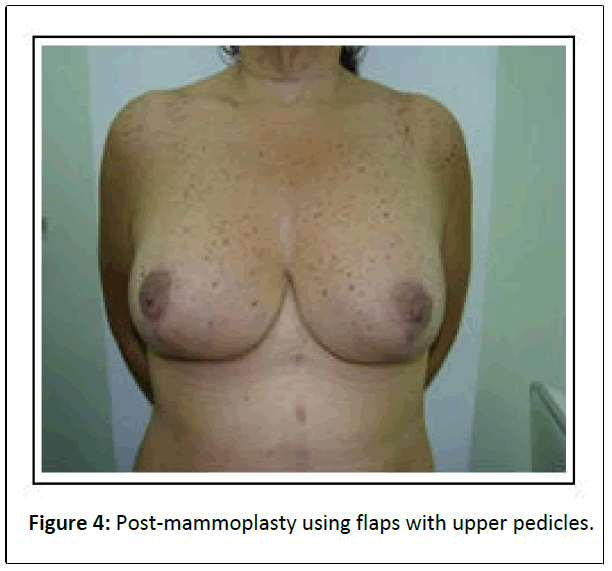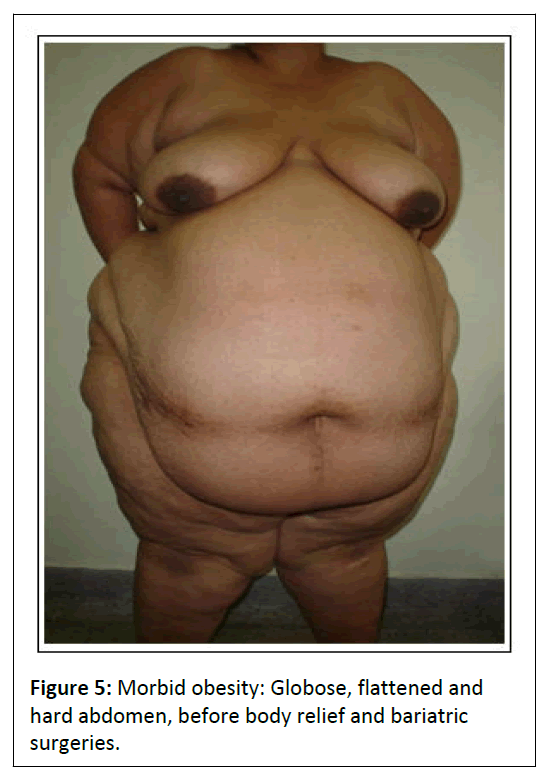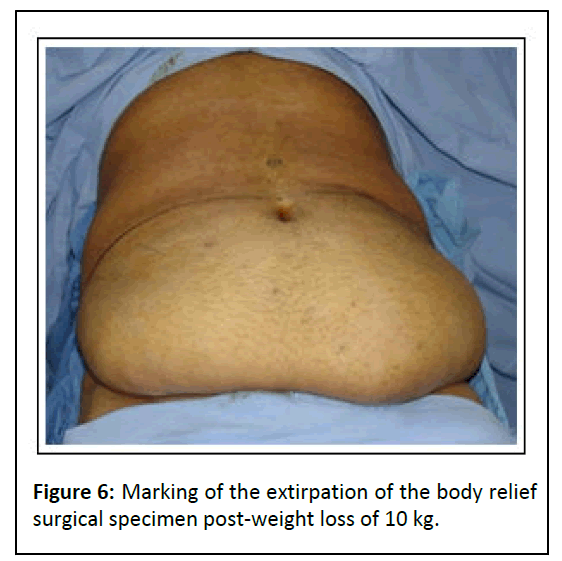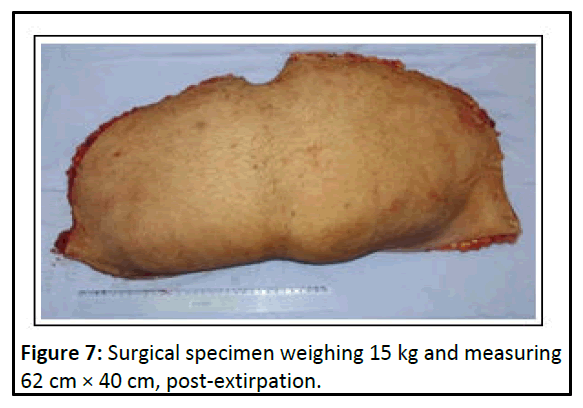Advantages and Reduction of Risks: Bariatric Surgery, Slimming and Plastic Surgery
José Humberto Cardoso Resende*, EmÃdio Silva Falcão Brasileiro, Thonya Cruz Braga, Anderson Alves Brandão, Amanda Thoma, Arley Braz Gomides, Beatriz Alcântara Mendes, Marcus Paulo M Silva, Suyara Veloso de Lemos and Valesca Larissa Fernandes Costa
Department of Medicine, Alfredo Nasser University, Aparecida de Goiania, Brazil
Published Date: 2023-05-15DOI10.36648/2472-1905.9.2.156
José Humberto Cardoso Resende*, Emídio Silva Falcão Brasileiro, Thonya Cruz Braga, Anderson Alves Brandão, Amanda Thoma, Arley Braz Gomides, Beatriz Alcântara Mendes, Marcus Paulo M Silva, Suyara Veloso de Lemos and Valesca Larissa Fernandes Costa
Department of Medicine, Alfredo Nasser University, Aparecida de Goiânia, Brazil
- *Corresponding Author:
- José Humberto Cardoso Resende
Department of Medicine,
Alfredo Nasser University, Aparecida de Goiânia,
Brazil,
E-mail: jresen99@hotmail.com
Received date: April 13, 2023, Manuscript No. IPARS-23-16351; Editor Assigned date: April 17, 2023, PreQC No. IPARS-23-16351 (PQ); Reviewed date: May 01, 2023, QC No. IPARS-23-16351; Revised date: May 08, 2023, Manuscript No. IPARS-23-16351 (R); Published date: May 15, 2023, DOI: 10.36648/2472-1905.9.2.156
Citation: Resende JHC, Brasileiro ESF, Braga TC, Brandão AA, Thoma A, et al. (2023) Advantages and Reduction of Risks: Bariatric Surgery, Slimming and Plastic Surgery. J Aesthet Reconstr Surg Vol.9 No.2: 156.
Abstract
With the advent of bariatric surgery, the obese client began to have a new option of more humanized social life after the result of body weight loss. Evaluated by the Body Mass Index (BMI), the obese subject can present deformed body part, causing psychological problems capable of leading to depression and behavioral disorders. Surgical risks decrease in proportion as the weight/height ratio brings benefits to the patient before repair surgeries. More common are breast or abdomen exaggerations that increase the risks and number of corrective surgeries. The advantages are countless and result mainly in the considerable improvement of aspects of walking, clothing, work, interpersonal relationships, communication and physical and psychological well-being. We emphasize the advantages of weight loss by free will or through body relief surgeries before bariatric surgery. After gastric reduction, due to decreased feeding, we wait for the stabilization of the slimming for subsequent corrections of the deformed parts of the body.
Keywords
Slimming; Obese subject; Plastic; Aesthetic; Bariatric; Relief; Risks
Introduction
Obesity is a disease that causes several disorders in the body and causes a psychological impact on individuals [1]. We could classify it in degrees by the amount of body fat or based on the ratio weight × height or only on obese or morbidly obese. For this, we used the (BMI) Body Mass Index to better determine the degree of obesity (Table 1).
| BMI (kg/m2) | Classification |
|---|---|
| Less than 18.5 | Underweight |
| Between 18.5 and 24.9 | Normal weight |
| Between 25 and 29.9 | Overweight |
| Between 30 and 34.9 | Obesity class I |
| Between 35 and 39.9 | Obesity class II |
| Greater than 40 | Obesity class III (morbidity) |
| Note: BMI=Weight/Height2 | |
Table 1: This index, approved by the World Health Organization (WHO), can be found in children and adults and is calculated based on height (m) and weight (kg), thus leaving formula [2].
We will find the exceptions in athletes and pregnant women. The former have a high amount of muscle mass and self-define and pregnant women have a high BMI, depending on the baby's weight. We can still find people with high visceral fat content and in some cases, men with the same weight and different rating [3], as in sportsmen. The strong are not always considered obese. BMI is considered good when it is between 18.5 and 24.9. In children, follow-up with the pediatrician is advised.
The most common is for an obese individual to have bariatric surgery before plastic surgery and avoid the accordion effect (client slimming, fattening and slimming again). To avoid these complications, we usually indicate:
• Meal planning with or without the help of a nutritionist [4].
• Regular physical exercises (gymnastics and gyms).
• Remove fat and sugars from meals.
• Eat balanced meals.
We know that it is not easy to lose weight and change habits. Therefore, we remind you that, to lose weight with health, medical and nutritional monitoring is necessary [5]. For better physical conditioning, we have the following precautions:
• Avoid excessive physical activity.
• Drink around 2 liters of water per day.
• Eat foods rich in protein, vitamins and minerals.
• Eat fruits daily.
• Eat regularly every 3 hours [6].
The largest body deformities or gigantisms are found in the breasts and abdomens. We advise slimming, both of free will before and after bariatric surgery, to avoid the risks of:
• Anesthetic problems.
• Respiratory accidents on the operating table.
• Possibility of suffocation due to excessive weight in part of the body.
• Pulmonary embolism.
• Post-operative walking difficulty [7].
• Weight loss after plastic surgery.
• Need for repetitions of some plastic surgeries.
• Increased body sagging with folds and wrinkles.
Case Presentation
In people considered obese or with body gigantism, we recommend doing weight loss and/or body relief surgeries first (Figures 1 and 2). Bariatric surgery [8] is more indicated in obesity grades I and II and, subsequently, plastic surgery should be performed (Figures 3 and 4), as the result is more defined and avoids multiple repairs in addition to being more sequential, that is, one body part at a time [9]. We advise you to avoid the accordion effect after bariatric surgery, so that the result is longer lasting.
In cases of abdomen in morbid obesity, with characteristics of globose, hardened, smooth and uncomfortable (Figure 5), it is necessary to temporarily avoid, until weight loss, the performance of any type of surgery, including bariatric [10]. In periods of body-relief surgery, avoid associations with major surgeries such as liposuction, hernias and other extirpations.
The larger the obese part of the body, the greater the care with the preoperative marking [11] (Figure 6). There are operative parts ranging from 8 kg to 12 kg (Figure 7). In breast reduction surgeries [12], which we call “breast gigantomastia”, it is not possible to use the very long areolar pedicles [13].
Obesity with gigantism of the abdomen [14] can cause occasional defects, problems in the spine, difficulty sleeping or having to sleep sitting, difficulty finding clothing numbering, harming relationships, in addition to great scars after repair surgeries. The techniques used in plastic surgeries will depend on the body volume and location of the obese part. Bariatric surgeons choose the technique that best suits each case [15].
Result and Discussion
Although we did not have operative deaths, it is important to act in the best possible way to reduce the risks by indicating large extirpations in giant cases and when performing bariatric surgeries on morbidly obese clients. There are difficulties in operating clients with extirpations of more than 20 kg in weight in conventional techniques. Time has shown us that the prevention of complications will bring us a safe operative act and an uneventful postoperative period. We recommend a greater exchange between bariatric surgeons and plastic surgeons, where everyone involved gains from the positive results. By avoiding surgical associations with multiple plastics and liposuction, we will preserve the client's life and avoid possible inconvenience, in addition to reducing the surgical time.
Conclusion
Slimming before and after bariatric surgery has contributed to better skin quality and deformities not accepted by the client, before the proposed plastic surgeries. The result of the combination between bariatric surgery and plastic surgery will depend on pre- and postoperative care of obese people with dyspnea individuals and large localized fats, in order to avoid recurrent embolisms and heart problems. We will associate nutritional, physical therapy and endocrine treatments. In the case of plastic surgeries, it is necessary to add good psychological guidance before and after the repair and aesthetic phases, so that clients can better accept major body modifications.
Conflicts of Interest
The authors declare no conflicts of interest regarding the publication of this paper.
References
- Streb AR, and del Duca GF (2020) Obesity and physical exercise: Latent challenges. Biomotriz 13: 1-5.
- Laun IC, Costa RA, Benchimol IT, Mendes TP (2008) Obesity: Concept, etiology and classification. Treat Plas Surg Obes, Rio de Janeiro 107- 110.
- França AMAP, Lima M (2008) Physiotherapy in the preoperative and postoperative periods of plastic surgery in obesity. Treat Plas Surg Obes 197-214.
- Resende JHC (2008) Obesity workshop in plastic surgery or life workshop. Treat Plas Surg Obesity 239-244.
- Resende JHC (2008) Resende technique for correction of gigantism-surgery for body relief. Treat Plas Surg Obes 357-365.
- Almeida ALJ, Amaral TCN (2008) Proper nutrition. Treat Plas Surg Obes 3-9.
- Santos AC, Barroso LMBS (2008) The beginning of speech therapy in patients with obesity. Treat Plas Surg Obes 63-67.
- Meira AAM, Andrade IF, Ferreira FPM (2008) Plastic surgery after gastroplasty: A preoperative and postoperative approach. Rev Bras Cir Plást 23: 15-21.
- Baroud R, Lewis JR (1976) The augmentation-reduction mammaplasty. Clin Plast Surg 3: 301-308.
[Crossref], [Google Scholar], [Indexed]
- Nassif DSB, Malafaia O, Nassif PAN, Kuretzki CH, Lucas RWC, et al. (2011) Multi-professional electronic protocol in bariatric surgery. Arch Bras Cir Dig 24: 215-218.
[Crossref], [Google Scholar]
- Kraske H (1923) Die Operation der atroplischen und Hypertroplischen Hangebrust. Munch Med Wochenschr 60: 672.
- Pitanguy I (1967) Surgical treatment of breast hypertrophy. Br J Plast Surg 20: 78-85.
[Crossref]
- JHC Resende (2008) Tratado de Cirurgia Plástica na Obesi dade. Rubio
- Georgiade GS, Riefkohl RE, Georgiade NG (1980) The inferior dermal-pyramidal type breast reduction: Long-term evaluation. Ann Plast Surg 23: 203-211.
[Crossref], [Google Scholar], [Indexed]
- de Melo PRE, Braga TC, Minari DF, Resende JHC (2022) Transit bipartition with duodeno-ileal anastomosis, without duodenal exclusion, as a first stage of bariatric surgery in severely obese patients: Case report. Surg Sci 13: 497-505.
[Crossref], [Google Scholar]
Open Access Journals
- Aquaculture & Veterinary Science
- Chemistry & Chemical Sciences
- Clinical Sciences
- Engineering
- General Science
- Genetics & Molecular Biology
- Health Care & Nursing
- Immunology & Microbiology
- Materials Science
- Mathematics & Physics
- Medical Sciences
- Neurology & Psychiatry
- Oncology & Cancer Science
- Pharmaceutical Sciences
